Luftwaffe 1946 Fighter Competition
At the beginning of
1945 the RLM (Reichsluftfahrt Ministerium) invited aircraft
manufacturers for three fighter competitions to provide new fighters
for the Luftwaffe. The aim was to reduce the number of
operational types and achieve a significant step forward in fighter
capabilities over the types then service. The Luftwaffe used a mix of
FW-190, Ta-152, Me-109, Me-262, He-162 and Me-163 types. The piston
engined fighters were more and more outclassed by the newer allied
fighters and the jet aircraft were clearly the first-generation jets
with all associated teething problems.
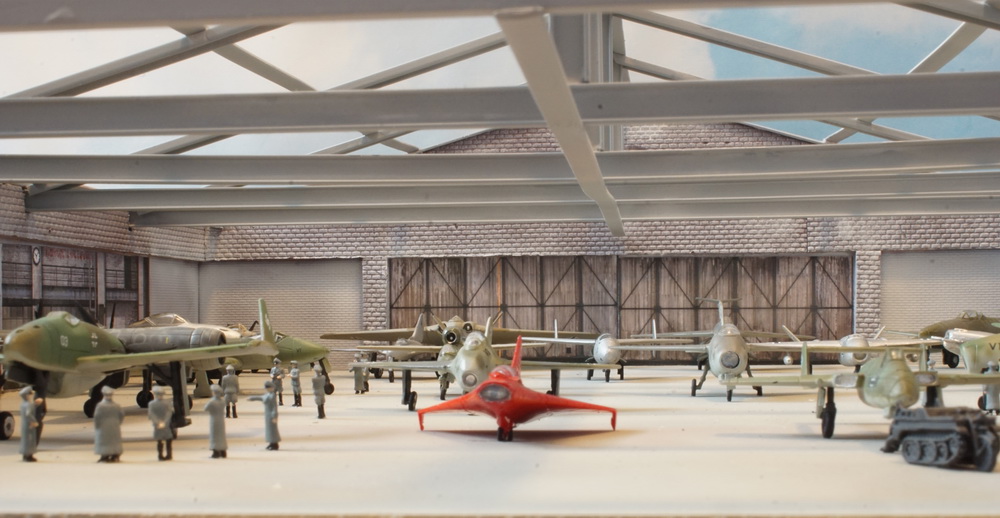
Three categories were named on the invitation:
Jager-P (Propeller), Jager-D (Dusen/Jet) and Jager-B (Bord/Parasite).
The latter was meant to be carried on or under a bomber aircraft and
released in the case of attack.
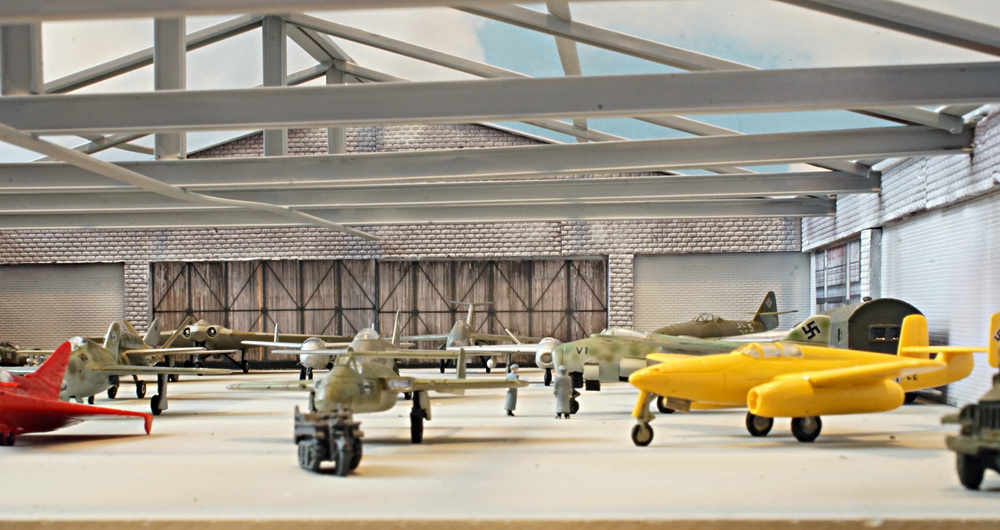
Companies were invited to participate in all three
competitions and could enter as many designs as possible. Initial
design studies had to be handed in to the RLM by the first of August
1945. After an initial screening, nineteen designs were selected, and
the manufacturers were instructed to build three prototypes of each
design. The prototypes should be ready for a fly off in April 1946.
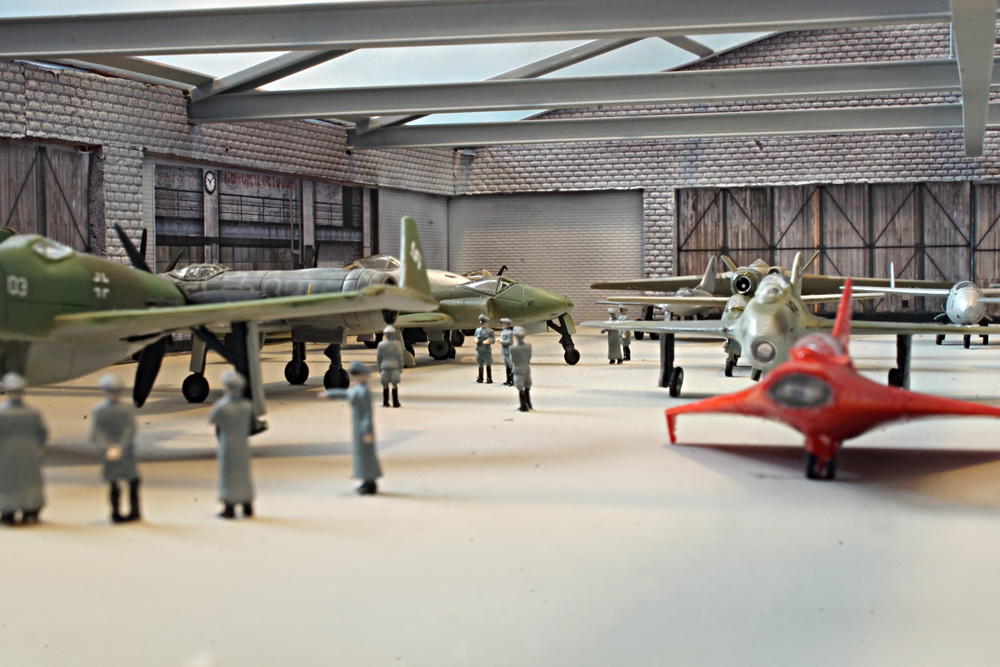
The company with the most designs (six) was
Messerschmitt. Messerschmitt was keen to re-establish its position as
the primary supplier of fighter aircraft for the Luftwaffe. They were
followed by Blohm & Voss and Focke Wulf with three designs. Junkers,
BMW, Lippisch, Daimler Benz, Horten and Heinkel each had one design
approved. There were three designs in Jager-P category, three in
Jager-B and thirteen in the Jager-D category.
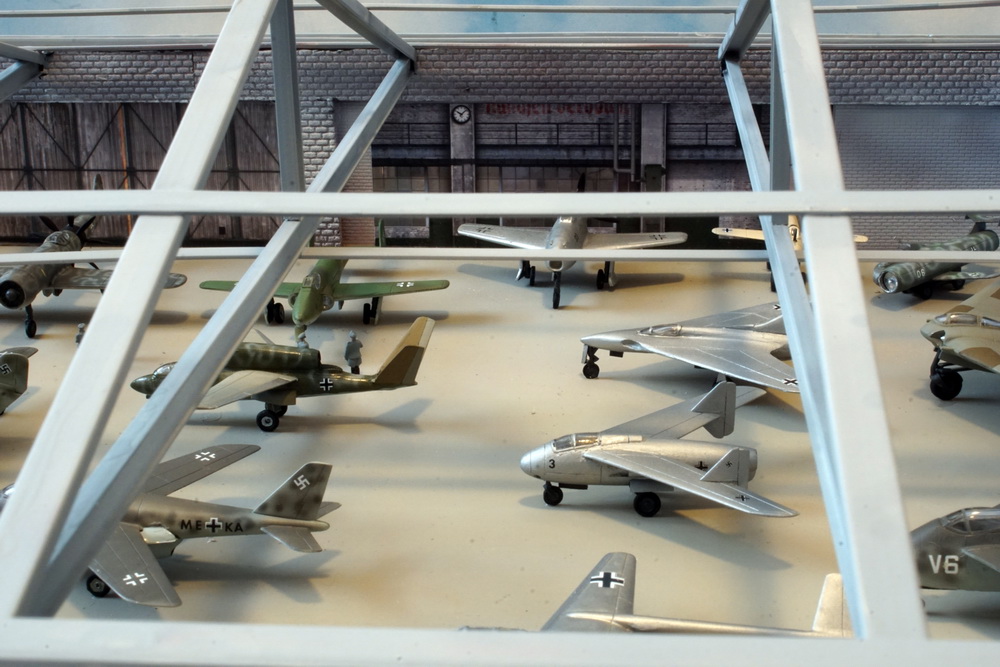
Because some manufacturers had trouble getting the
prototypes ready on time, the competition was postponed to August 1946
and even then, some aircraft were only just finished. Although only
three prototypes were ordered some companies produced more as private
ventures to speed up development or to replace prototypes lost during
testing.
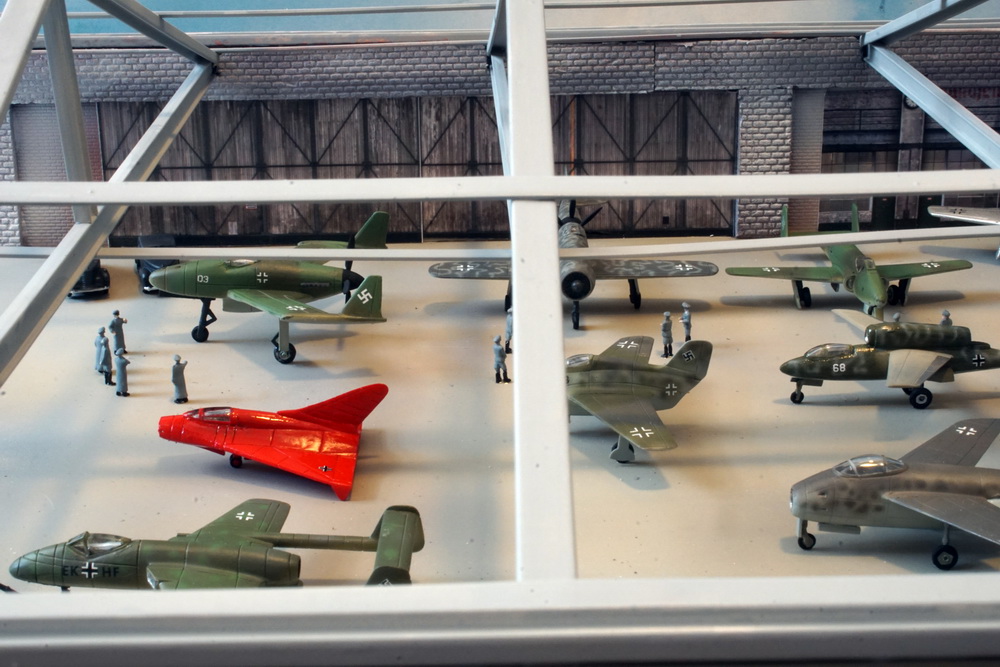
The Propeller and Bordjager category did not lead
to production orders. The RLM found that although the Blohm & Voss
entry showed very good overall performance, the day of the piston
engined fighters was over and the Luftwaffe should not order any new
ones.
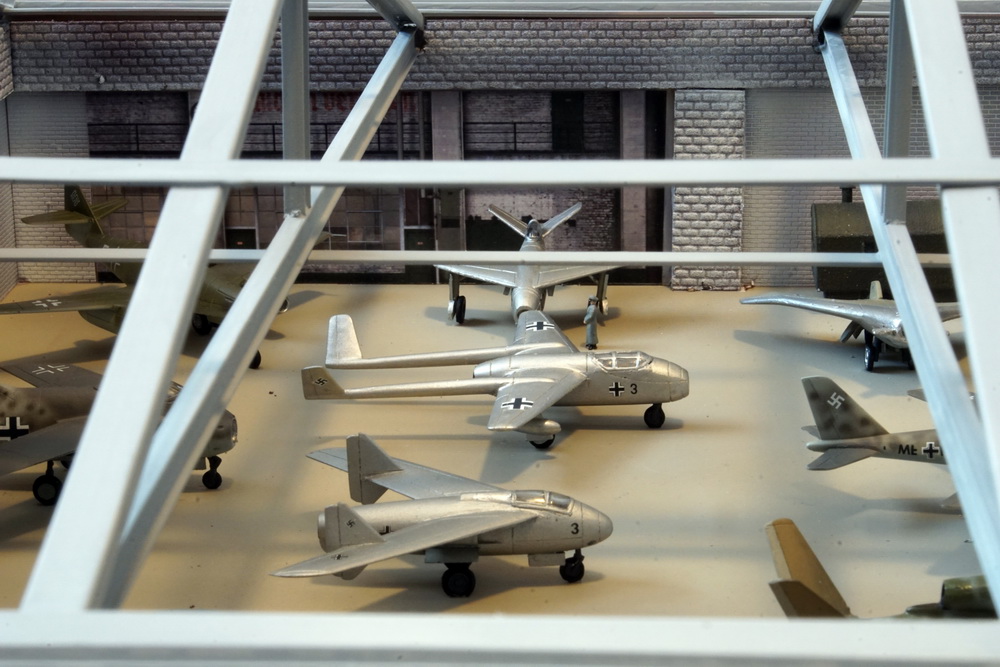
In the Bordjager category there was no clear
winner. All three entries had insufficient performance and armament and
the whole concept op a parasite fighter was questioned. Despite this
the Lippisch design was selected for further development.
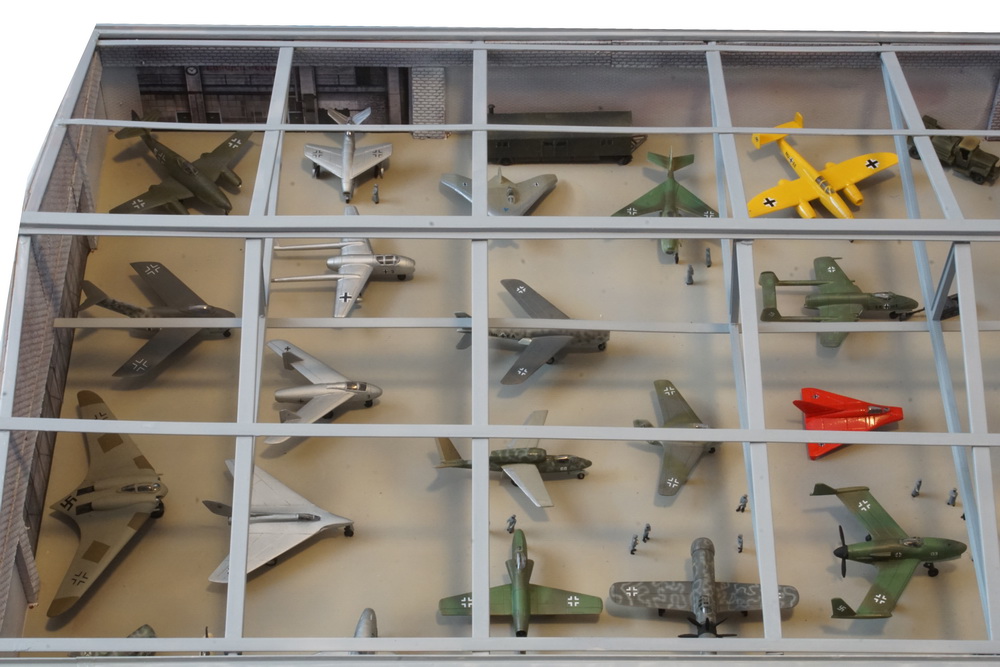
The competition in the jet fighter category was
fierce with no less than thirteen entries participating. After much
deliberation the Focke Wulf Fa-226 Flitzer was selected as winner and
production orders for a thousand Fa-226A models were issued.
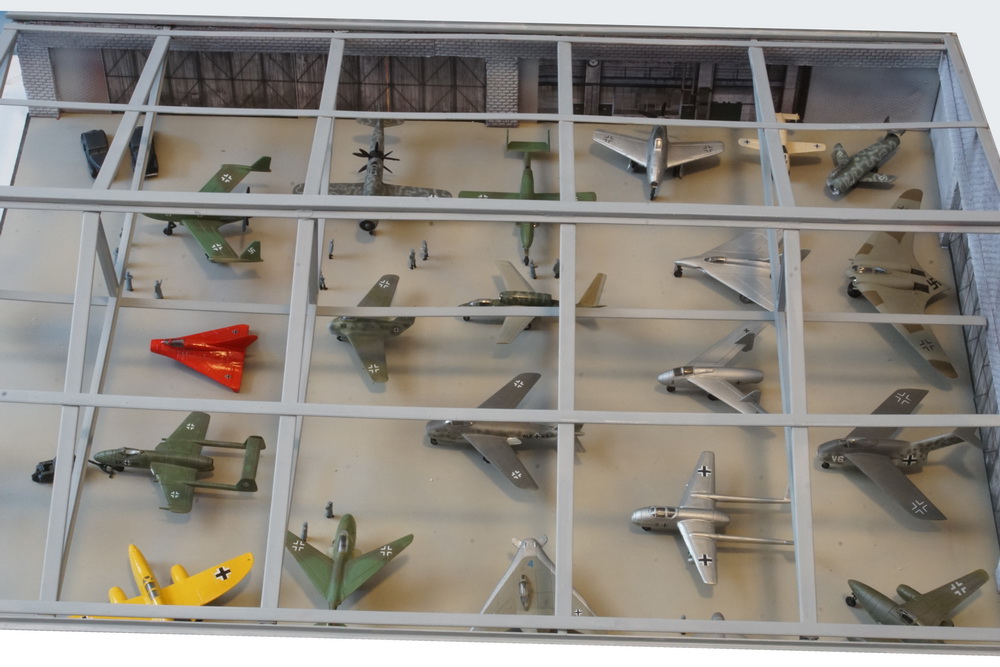
The accompanying pictures show the various
prototypes during the evaluation by the Luftwaffe in August 1947.
During this evaluation one prototype of each type was allowed to
participate in trials for speed, range and manoeuvrability. Mock
combats with several Me-262 fighters were held as were mock attacks on
bomber aircraft. An ageing He-280 prototype served as chase aircraft,
painted overall yellow.
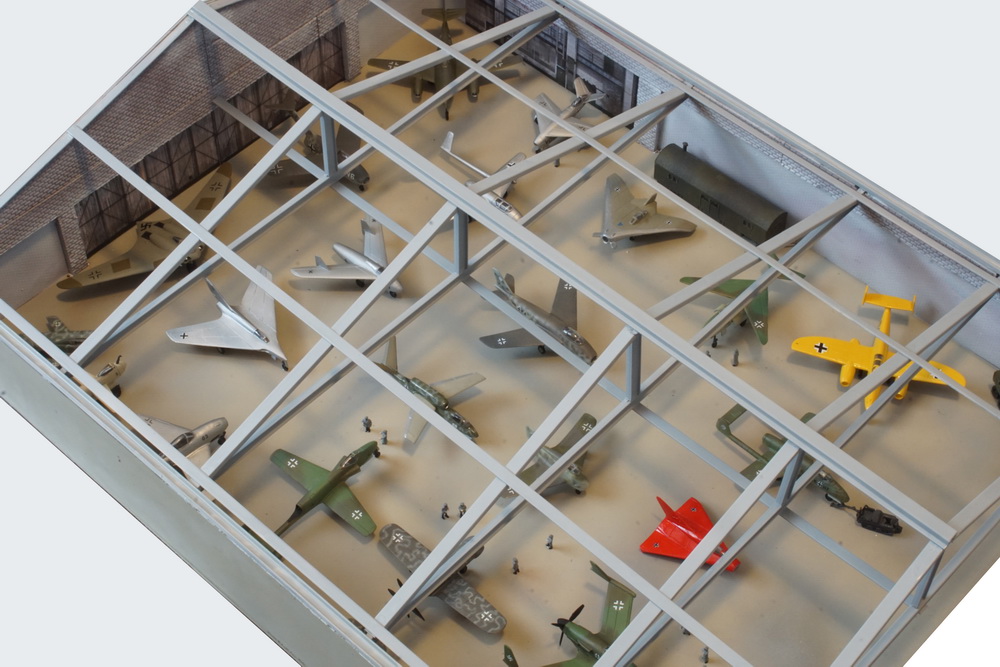
Below is the floorplan of the hangar with a key to
some details for each prototype.
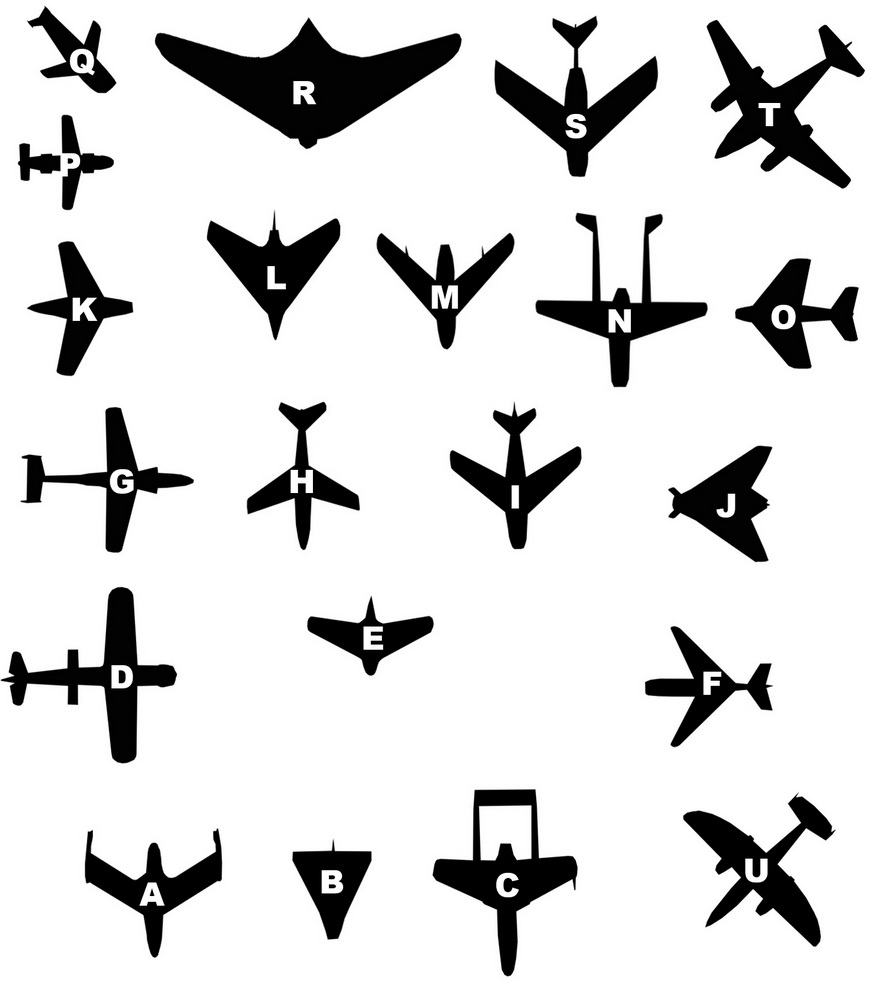
| Key |
Picture |
Specification |
Manufacturer |
Type |
RLM Number |
Engine |
Description |
| A |
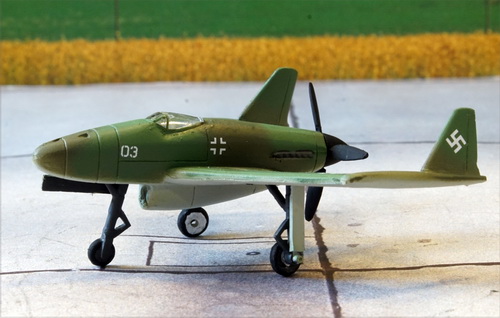 |
Propellor |
Blohm & Voss |
P-208 |
BV-327 |
DB603 |
A very unusual design as a tailless aircraft with swept back wings, the BV-327 demonstrated a very good performance and great manoeuvrability.
A tricycle undercarriage was used, with the wide-track main wheels retracting inwards into the centre section and the nosewheel retracting forwards. All armament was in the aircraft's nose and consisted of three MK 108 30mm cannon.
This design was clearly the best of the three piston engined fighters in the competition. However, there were great doubts about its ability to survive against allied jet fighters and no production run was ordered.
The aircraft in the competition was the third prototype. |
| B |
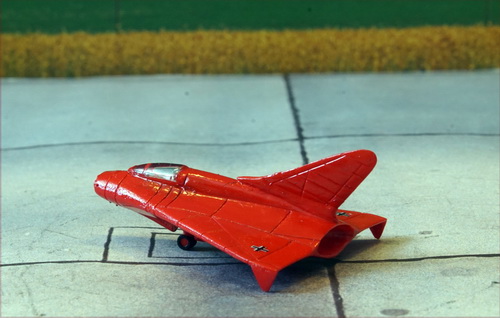 |
Bord Jager |
Lippisch |
P-12 |
Li-305 |
Lorin Ramjet |
This was the only Lorin ramjet powered aircraft in the competition. Because of this engine, this fighter was unable to take off under its own power and had to be carried aloft by a larger carrier aircraft.
The size also limited its capability to carry weapons and this reduced efficiency. After release from the carrier aircraft the Li-305 could land conventionally.
Although no winner was declared in the B (Bord) category, this Li-305 was considered the best of the three contestants.
The aircraft in the competition was the first prototype as Lippisch did not have time to produce more than one prototype. |
| C |
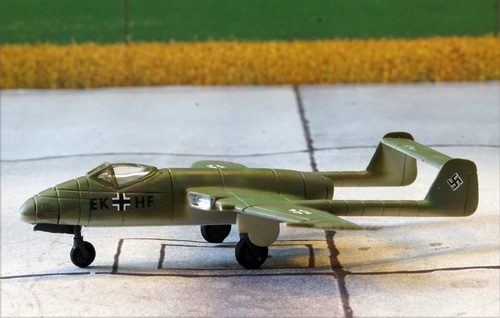 |
Dusen Jager |
Focke Wulf |
P-VII |
Ta-226 |
HeS-011 |
The Ta-226 was the clear winner of the
fighter competition. Performance was among the best of the
various prototypes but also range and armament were good.
Presumably the fact that the design was rather conventional
also counted in its favour. Immediately after the competition a
initial order of 1000 aircraft was given to Focke Wulf with the
first production aircraft reaching operational status in 1947.
The aircraft in the competition was the fourth prototype. Focke
Wulf produced more than the specified three prototypes as they
were very keen to do well in this competition. |
| D |
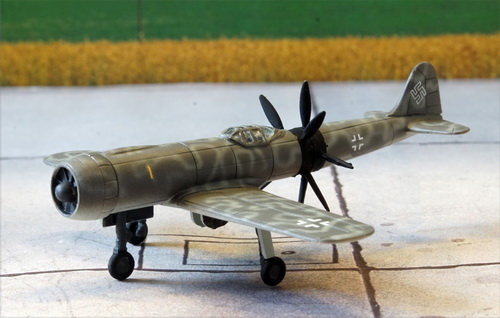 |
Propellor |
Daimler Benz |
DB609 |
DB-391 |
DB609 |
Originally conceived as a demonstrator
for the new 2700hp 18-cylinder DB-609 engine Daimler Benz
decided to develop the aircraft into a propeller fighter for
the competition.
It was of a conventional layout with the
exception of the propellerís location. The engine was mounted
in the fuselage nose, with an annular radiator in front. The
wings were un-swept and exhibited no dihedral and were mounted
below the fuselage. The tail was of a conventional design, with
its single fin and rudder. Because of the propeller
arrangement, a tricycle landing gear had to be used. A single
pilot sat in the cockpit that was located towards the rear,
just ahead of the contrarotating propellers.
Where the
Daimler Benz Jager differed from most aircraft was its unusual
propeller placement which was in the middle of the aircraft in
a ring around the fuselage.
The aircraft was troubled by the
new engine which caused a lot of problems and also the
propeller arrangement was not very efficient.
The aircraft
in the competition was the first prototype. |
| E |
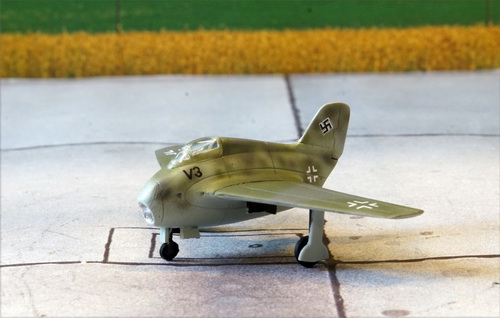 |
Dusen Jager |
Messerschmitt |
P-20 |
Me-304 |
Jumo 004 |
The Lippisch P.20 jet fighter project
was a further development of the Me 163 "Komet" and was the
final design of Dr. Alexander Lippisch for the Messerschmitt
company before the development department was disbanded. The
P.20 was similar in appearance to the Me 163, with an air
intake mounted low in the nose which fed a single Jumo 004
turbojet. Armament was to be two MK 108 30mm cannon mounted in
the forward fuselage sides and two MK 103 30mm cannon mounted
in the wing roots.
The design was considered too small to
enable much development and was not pursued any further.
The
aircraft in the competition was the third prototype. |
| F |
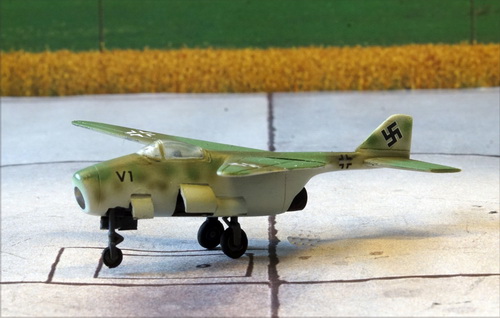 |
Dusen Jager |
Blohm & Voss |
P-209.02 |
BV-299 |
HeS-011 |
This Blohm & Voss design had a forward
swept wing. It was small aircraft with excellent performance.
However due to its small size the weapon load was comparatively
light.
The type came in third behind the Ta-226 and Ju-289.
The aircraft in the competition was the first prototype. |
| G |
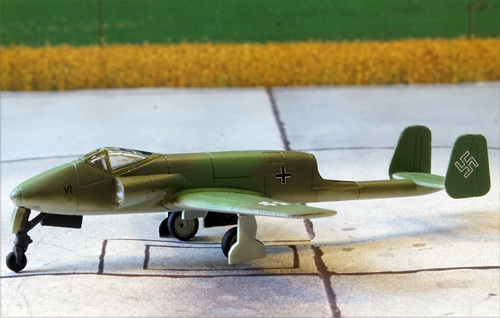 |
Dusen Jager |
Focke Wulf |
P-III |
Ta-306 |
HeS-011 |
This was basically an older design by
Focke Wulf which was upgraded for the 1947 competition by
replacing the original Jumo 004 engine with a Heinkel HeS-011
engine. However, the performance of the aircraft lagged behind
the other competitors. The aircraft in the competition was the
first prototype. |
| H |
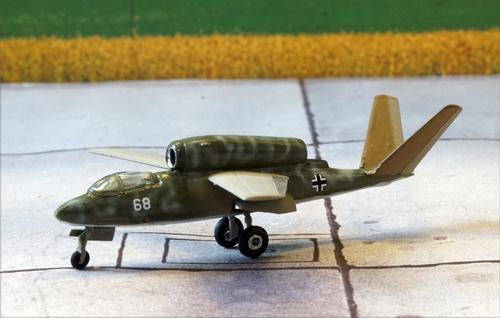 |
Dusen Jager |
Heinkel |
P-1089 |
He-162D |
HeS-011 |
Heinkel wanted to enter the P-1080
design in the competition but was unable to complete the
prototypes in time for the tests. This left the company no
option but to enter the He-162D. This was a development of the
less than successful Heinkel Volksjager with forward swept
wings and a V-tail.
Performance was lacklustre however and
was far behind the other aircraft in the competition.
The
aircraft in the competition was the V068 prototype. |
| I |
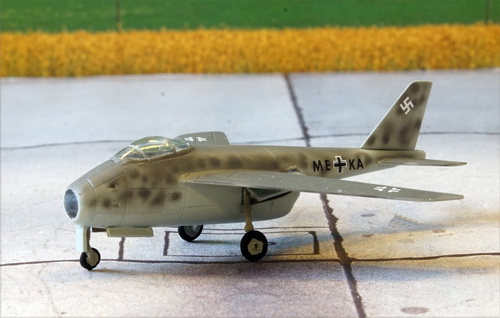 |
Dusen Jager |
Messerschmitt |
P-1101 |
Me-275 |
HeS-011 |
Initially meant as an experimental
aircraft to investigate the effect of different angles of wing
sweep Messerschmitt decided to enter the design in the fighter
competition as a safeguard for the potential failure of his
other more advanced designs. The Me-275 turned out to be not
really suitable a as fighter because of the lack of room for
any heavy armament in the small fuselage.
The aircraft in
the competition was the sixth prototype. |
| J |
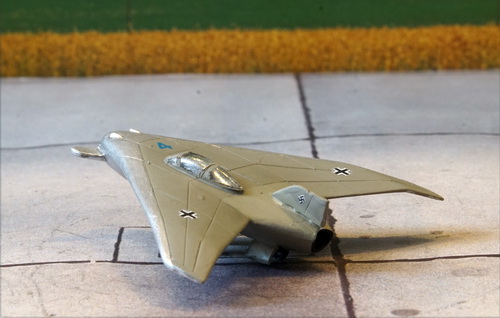 |
Dusen Jager |
Blohm & Voss |
Ae-607 |
BV-347 |
HeS-011 |
This rather remarkable flying wing
design from Blohm & Voss performed quite well in the trials but
the design proved to exotic for the RLM
The aircraft in the
competition was the fourth prototype. |
| K |
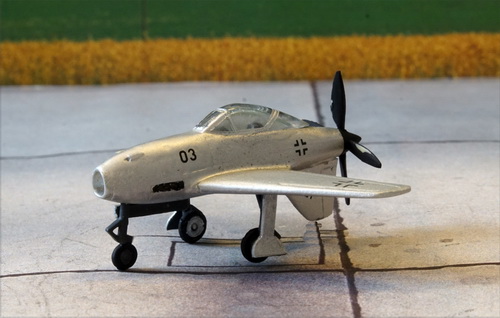 |
Propellor |
Messerschmitt |
P-14 |
Me-334 |
DB603 |
This was basically a piston engined
Me-163 designed by Alexander Lippisch when he was connected to
the Messerschmitt factory. The aircraft was developed by
Messerschmitt and entered the competition as a Messerschmitt
design.
The small size and the powerful DB603 engine made
the aircraft very difficult to handle by the enormous propeller
torque.
The aircraft in the competition was the third
prototype. |
| L |
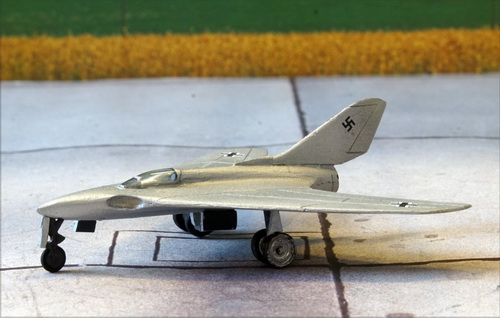 |
Dusen Jager |
Messerschmitt |
P-1111 |
Me-337 |
HeS-011 |
The Me-337 (P-1111) was one of the most
advanced designs in the competition. It was a tailless delta
powered by one HeS-011 engine. Performance was very good but in
order to improve performance and keep the aircraft as small as
possible Messerschmitt has removed almost all armour from the
design.
This lack of protection was severely criticized and
the design was not considered for production.
The aircraft
in the competition was the first prototype. |
| M |
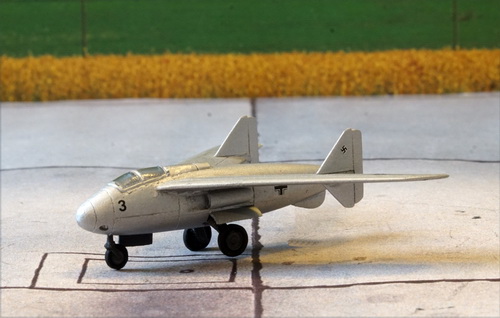 |
Dusen Jager |
Junkers |
EF-128 |
Ju-289 |
HeS-011 |
The Junkers Ju-289 was a tailless
design which showed great promise. However, the design just
lost out to the Focke Wulf Flitzer
The aircraft in the
competition was the third prototype. |
| N |
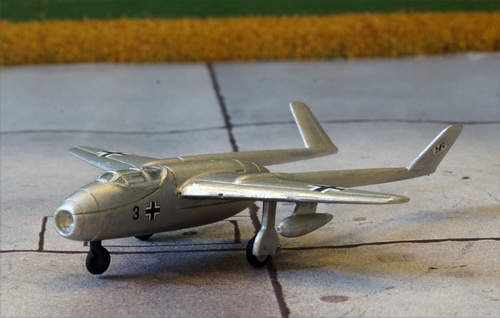 |
Dusen Jager |
BMW |
P-III |
BMW-324 |
BMW 003 |
This design was created by BMW as a way
to promote their own jet engines. However, the aircraft was
powered by the BMW 003 engine which was considered obsolete by
1947.
The aircraft in the competition was the third
prototype. |
| O |
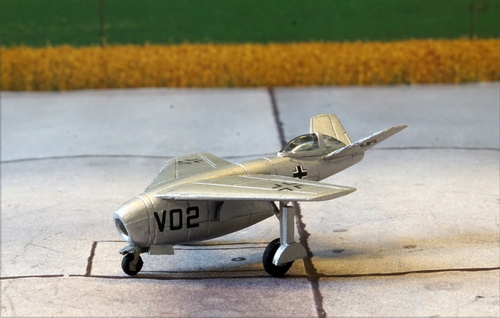 |
Dusen Jager |
Messerschmitt |
P-1106 |
Me-301 |
HeS-011 |
The Me-301 (P-1106) was a development
of the P-1101. It was smaller and the cockpit was moved far
back towards the tail.
Test pilots classified the aircraft
as dangerous to fly to completely unsuitable as a fighter.
The aircraft in the competition was the second prototype.
Messerschmitt built a total of eight prototypes of which six
crashed during testing. |
| P |
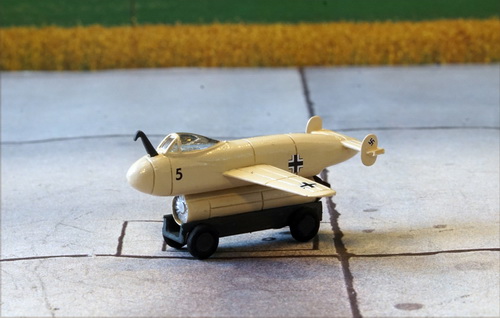 |
Bord Jager |
Blohm & Voss |
P-175 |
BV-307 |
Jumo 004 |
This aircraft was powered by a single
Jumo 004 engine and had no undercarriage to save weight. It was
armed with two 20mm canon. Due to the lack of a undercarriage
the aircraft could not land and the pilot had to bail out and
land by parachute. The aircraft would then also descend with a
parachute.
The aircraft in the competition was the fifth
prototype. |
| Q |
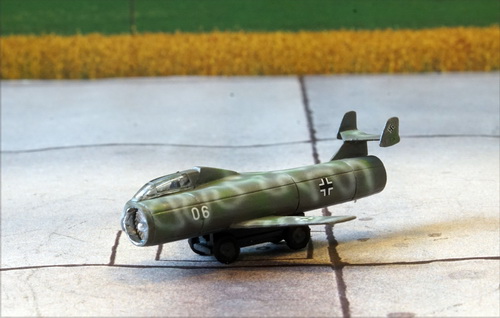 |
Bord jager |
Messerschmitt |
P-1079/16 |
Me-316 |
Schmidt Pulse Jet |
Powered by a single Schmidt pulse jet
the Me-316 was of an asymmetrical design It was armed with two
MG 151 20 mm cannon. It was handicapped however by the low
power of the engine and performance was below expectations.
The aircraft in the competition was the sixth prototype. |
| R |
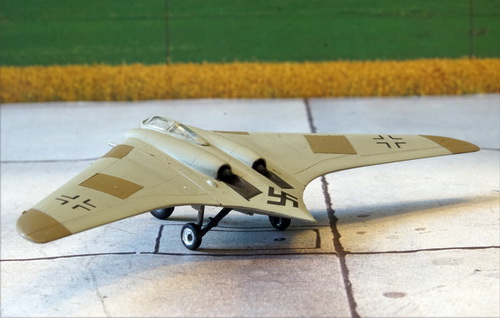 |
Dusen Jager |
Horten / Gotha |
IX |
Go-229 |
2 x Jumo 004 |
Although the design of the all wing
Horten IX started a number of years previously, the aircraft
was entered in the 1947 competition. The aircraft turned out to
be too heavy however and not manoeuvrable enough to compete
with the other designs.
The aircraft in the competition was
the seventh prototype. |
| S |
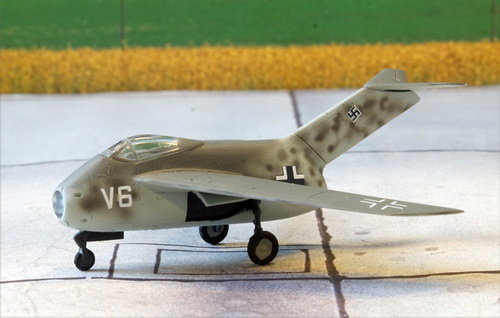 |
Dusen Jager |
Focke Wulf |
P-VI |
Ta-183 |
HeS-011 |
The Ta-183 was a small swept wing
fighter with a high T-Tail. Although the performance of the
aircraft was excellent, the tail caused problems at high speed
and several prototypes were lost due to structural problems.
Focke Wulf offered to improve the design but the offer was
declined as the Ta-226 was selected for production.
The
aircraft in the competition was the sixth prototype. |
| T |
|
|
Messerschmitt |
|
Me-262 |
2 x Jumo 004 |
A number of Me-262 production fighters
were used as adversaries during the trials. |
| U |
|
|
Heinkel |
|
He-280 |
2 x Jumo 004 |
The Heinkel He-280 V-10 was used as a
chase aircraft during the trials. Painted RLM yellow for better
visibility. |
All models in 1/144 scale. Most are Anigrand resin kits, the Go-229 and
He-162D are injected Brengun kits. The Ta-183 and P-1101 are injected
kits from Valom, the P-20 is by Jach.
|

